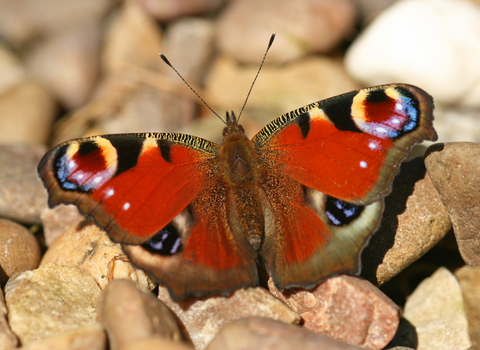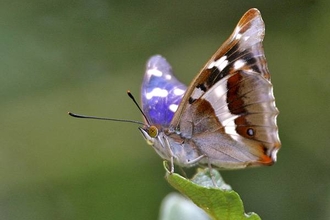Why is there a butterfly in my house?
Our winter is typically too cold for butterflies to stay active, so they spend the coldest months in a dormant state - technically insects don't hibernate, but it's a very similar process. Most pass the winter as caterpillars, a chrysalis or an egg, but a few species spend the winter as adult butterflies. The two you're most likely to find inside your house are the small tortoiseshell and the peacock.
They come inside in late summer or early autumn, find a cool part of the house and enter their dormant state. Later in winter, when your central heating comes on and the house gets warmer, they wake up and become active again.
Small tortoiseshell found indoors ©Nick Packham
What should I do with it?
If it's still winter, conditions outside are likely to be too cold for a butterfly to survive and find food. They might find a cooler spot in the house to roost and settle again, such as a loft or cellar, but if they are very active you may need to lend them a hand.
Carefully catch the butterfly and place it in a cardboard box, then leave it somewhere cool for a half an hour or so, giving it chance to settle down. Then you can relocate it somewhere cooler - the inside of a shed, garage or outhouse is perfect. Just make sure the butterfly has an escape route for when spring arrives.
If you have nowhere suitable for a butterfly to spend the rest of the winter, try to keep it in a relatively cool spot until the weather improves. Release it on a warm and dry day and it can fly away and find another suitable roosting place.



